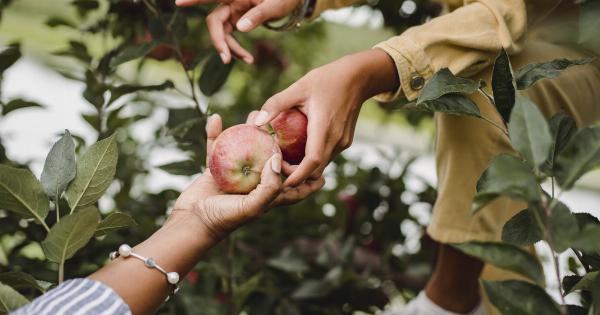When it comes to consuming fruits and vegetables, it is crucial to clean them thoroughly to ensure that they are safe for consumption. Fruits and vegetables can contain various contaminants such as pesticides, dirt, bacteria, and even parasites.
By following some easy and effective cleaning methods, you can minimize the risk of illness and enjoy your produce with peace of mind. In this article, we will discuss ten simple ways to safely clean your fruits and vegetables.
1. Wash your hands
Before handling any produce, it is important to wash your hands thoroughly with soap and warm water. This will help to remove any dirt, bacteria, or other contaminants from your hands that could potentially transfer to the fruits and vegetables.
2. Rinse under cold water
The first step in cleaning your produce is to rinse them under cold running water. This will help to remove any loose dirt or debris. Rub the fruits and vegetables gently with your hands, ensuring that all surfaces are exposed to the water.
Avoid using any soaps or detergents as they may leave residues on the produce.
3. Soak in vinegar solution
For firmer fruits and vegetables such as apples, cucumbers, or grapes, you can create a simple vinegar solution to effectively clean them. Mix one part vinegar with three parts water in a bowl or sink.
Soak the produce in this solution for about 15-20 minutes, then rinse them thoroughly with cold water.
4. Use a vegetable brush
For produce with a rougher skin or surfaces like potatoes, carrots, or melons, using a vegetable brush can be beneficial. Gently scrub the surfaces of the fruits or vegetables with the brush under running water.
This will help to remove any stubborn dirt or pesticide residues.
5. Dry with a clean towel
After rinsing your produce, pat them dry with a clean towel or paper towel. Drying them will help to remove any remaining moisture, which can promote the growth of bacteria. Ensure that the towel is clean to avoid cross-contamination.
6. Peel when necessary
Some fruits and vegetables have a thick outer layer or peel, which can hold a significant amount of pesticides or contaminants. If possible, consider peeling these produce items to further reduce the risk.
However, keep in mind that some nutrients may be lost in the process, so choose wisely.
7. Store properly
After cleaning your fruits and vegetables, it is essential to store them properly to maintain their freshness and quality. Place them in the refrigerator or in a cool, dry place depending on their individual requirements.
Ensure that they are separated to prevent any cross-contamination.
8. Use produce-specific cleaners
If you prefer to use commercial produce cleaners, make sure to choose ones that are specifically designed for fruits and vegetables. These cleaners are formulated to remove pesticides and other contaminants effectively.
Follow the instructions provided on the product for the best results.
9. Buy organic produce
One of the best ways to minimize the exposure to pesticides and other chemicals is to opt for organic produce. Organic farming practices prohibit the use of synthetic pesticides, making the produce safer for consumption.
However, it is still important to wash organic produce thoroughly.
10. Be cautious with leafy greens
Leafy greens like lettuce, spinach, or kale often harbor more dirt and bacteria due to their textured leaves. To clean them effectively, rinse the leaves under running water, gently massaging them to remove any residues.
Alternatively, you can also soak them in cold water for a few minutes before rinsing.































